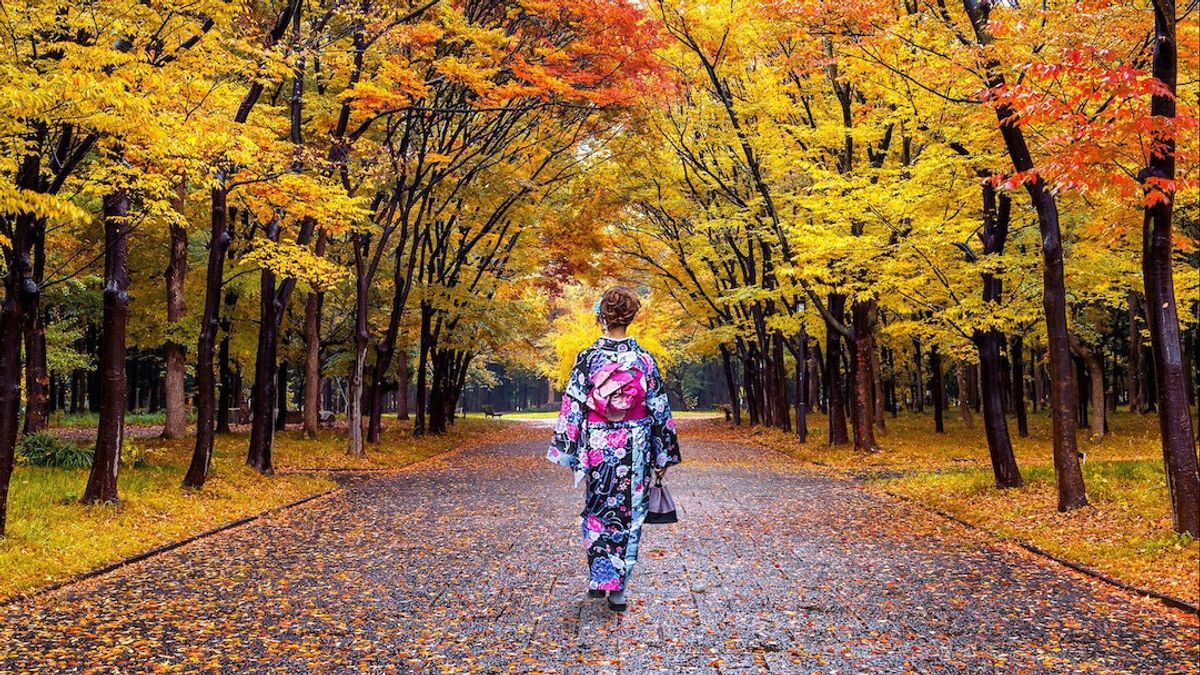YOGYAKARTA - fall in Japan is not just about a big festival or special celebration. Interestingly, there are some Japanese activities during the unique fall and rarely carried out in other countries.
People's daily activities in Japan have also changed over the changing seasons. Starting from the food consumed to the clothes worn, everything is adjusted to the autumn atmosphere.
Reporting from the JR Pass page, here are some activities that Japanese people usually do during the fall:
Kiyomizu-Dera is the UNESCO World Heritage Site with a large wooden stage famous for its stunning Kyoto scene. This temple consists of more than 30 buildings and structures on the slopes of Mount Otowa.
This ancient Buddhist temple is over 1,200 years old and takes the name 'pure water oil' from the water flowing through the temple complex of the Otowa Falls. Kyoto is one of the places to visit in Japan every fall thanks to the many harvest celebrations and traditional festivals that take place.
Every fall, in Hakaba, Usagidaira Night Festa will be held. Last year, this place was busy with various food trucks, entertainment, and fireworks at the end of September.
The fireworks usually consist of rockets launched at an altitude of 1,400 meters above sea level and the climax of the show is the appearance of a streak of 200 fireworks in the sky.
In the fall, the Temple will open an amazing private garden so that visitors can experience their own beautiful autumn colors.
The Plasylindari Temple was rebuilt in 1175 and is one of eight main temples representing the Jodo sect of Buddhism. The temple back garden offers some of the best leaves in the fall, but is usually closed to the public.
However, this Temple will open up a limited area for a limited time, usually between mid-November and early December.
Also read the article discussing Favorite Culinary for Indonesian Tourists in Japan: Taste Adventure in Sakura Country
The harvest month festival is traditionally celebrated in September in Japan, and it comes from the Nara period (710-744 AD), but does not become an official celebration until the Heian period (794-1185).
Legenda mengatakan bahwa tonggi terinspirasi oleh kebiasaan melihat bulan jugoya di masa dynasional Tang Cina (618-907), hingga kemudian diambil oleh jajarah Jepang yang akan memmainkan musik dan menyusun pelitahan di partai-party di bawah ray bulan.
The aristocrats of the past will also take the boats out at night to see the moon reflected in the water. This'see the moon' tradition turns out to have accumulated momentum for centuries, and in the period Edo (1603-1868) became popular among all social classes, including farmers.
At this time, this festival has become more closely related to other autumn traditions, in particular the public's gratitude to the gods for the abundant harvest and prayers for a successful year in the future.
Initially, it was celebrated on the 13th day of each month, but in 1683 the calendar changed and the full moon time was moved to the 15th. Since then, the festival's exact date varies depending on the lunar calendar, but it almost always takes place in September which is considered the best time to view the moon.
SEE ALSO:
There is an expression in Japan called 'Appetite Season' and this is a special time in a year for food lovers. Every fall a number of unique seasonal dishes will appear offered at several special food events and festivals across the country.
The fall is a season that brings dishes and flavors in Japan, such as warm Ramen, kesemek (Kaki), pine mushrooms broth, labus soup, chestnuts, Kyoho wine, sweet potatoes, Pacific makarel, Sanma fish, and many others.
Japanese people will flock to the Tokyo Ramen Show, Hokkaido Food Festival, and Tokyo Wagyu Show. There is even a name 'Maple Tempura', which is a food made of fresh leaves to be synthesized or sweetened and then fried in the tempura dough as a snack.
Apart from Japanese activities in the fall, follow other interesting articles too. Want to know other interesting information? Don't miss it, keep an eye on the updated news from VOI and follow all the social media accounts!
The English, Chinese, Japanese, Arabic, and French versions are automatically generated by the AI. So there may still be inaccuracies in translating, please always see Indonesian as our main language. (system supported by DigitalSiber.id)

















